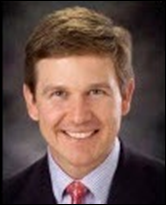Re: Walmart Health: Just had a great dental visit this morning, which was preceded by helpful reminders from Epic, and…
HIT Vendor Executives – Advice for Dr. David Blumenthal
We asked several EMR and consulting executives the following question:
If you could give national coordinator David Blumenthal one piece of advice, what would it be?
Evan Steele, CEO, SRSoft
My advice to David Blumenthal would be to think about EMR adoption more intently from the physician’s perspective. What is needed to truly facilitate the purchase and successful implementation of EMRs is what I have termed “EMR Reform” — a plan that would provide physicians with the unbiased information they need to make an informed EMR purchase decision.
The barriers to EMR adoption will not be overcome by the mere promise of $44,000 because the true barrier to adoption is the historically high rate of implementation failure. Physicians are rightfully gun-shy and will not be coerced into purchasing technology if that technology will not work for them, regardless of the incentive. If the government wants to stem the tide of failures and achieve its goal of increased EMR adoption, it should focus on protecting physicians from purchasing products that are not right for their practice and on making it easy for them to identify the products that are.
EMR reform would include the following three components, which I have described in detail in an EMR Straight Talk blog post, EMR Reform: A Plan to Spur Adoption:
- Increase product quality and usability through competitive benchmarking. Give practices the tools to objectively compare efficiency and give vendors an incentive to create more usable products.
- Provide transparency by issuing audited vendor report cards. Base the report cards on implementation success (by specialty), rather than on certification requirements.
- Establish an EMR Lemon Law. Remove the purchase risk by allowing providers to return EMR licenses if they do not perform as promised.
EMR Reform would go a long way towards leveling the playing field and restoring the balance between vendors and physicians. This is the only way to instill physician confidence and encourage widespread adoption.
Betty Otter-Nickerson, President, Sage Healthcare
Sage is largely in agreement with the Notice for Proposed Rulemaking (NPRM) and the interim final rule (IFR) that David Blumenthal released which calls for separates testing and certification of EHR systems as reasonable first steps toward the goals outlined under HITECH.
Though some in the practice physician community feel meaningful use is just another hoop they must jump through in an effort to retrieve incentive dollars, we have been educating providers and working with them to overcome their fear and trepidation by explaining the dramatic improvement in quality of care and the enormous public health benefits that will come as a result of implementing health information technology and EHRs.
To that end, however, we continue to convey to providers that if they wait too long, they are likely to be in a situation where they will have to meet the Stage 1, 2 and 3 requirements of meaningful use in a more compressed timeframe, which could ultimately prove very challenging.
At the same time, as we have expressed in our open comments, we feel that Dr. Blumenthal should consider softening the “all or nothing” approach of the NPRM so as to encourage maximum adoption during Stage 1, and to ensure that the final rule is more easily achievable for all physicians. We are concerned that if the bar is set too high, too few physicians may attempt to achieve meaningful use. This could deter overall improvement of quality care and the public health.
Jim Bodenbender, President, RelayHealth Connectivity Solutions
The investments our country is making toward a more efficient, quality-focused healthcare system are commendable. The focus on foundational technologies is important because many of our country’s greatest healthcare assets are small, community-based private practices.These small practices are hesitant to adopt technology for a number of reasons, particularly cost, return on investment, and the vast variety of products available. Thus in order to quickly expand clinical connectivity throughout our healthcare system, we must focus on community-level interoperable connectivity.
In mid-May, you stated that “…all of our efforts must be grounded in a common foundation of standards, technical specifications and policies.” One need only look at how states are deploying HIE-targeted federal funds to agree with this statement. A “common foundation…of policies” would bring more consistency and certainty to the expansion of healthcare connectivity.
The variability among the states in supporting HIE will likely delay the anticipated benefits and, in many cases, may result in programs that will not be sustainable. The large variation of standards, technical specifications and policies ensure that a significant portion of the funds intended for HIE are used for ancillary services in an attempt to develop strategies, select solutions and provide oversight – thus slowing the expansion of clinical integration, eroding the funds available for the acquisition of technology, and thwarting the forward momentum our healthcare system is trying to achieve.
Additionally, while the secure exchange of healthcare information is imperative, we mustn’t lose sight of the fact that for information to be valuable, it must be actionable. While the ability to share and view information is helpful and will surely help reduce testing redundancies and improve a provider’s view of a patient’s total healthcare picture, making information actionable will enable the workflow and cost efficiencies – and value – that will expand provider adoption.
Throughout the entire process, the focus of connectivity efforts must remain firmly on the patient and the related benefits in doing so. One might surmise that a major reason for our healthcare systems’ current inefficiencies is that the patient is disengaged from his or her own healthcare. Putting the patient at the center of healthcare connectivity and encouraging consumer engagement into the process will assure that we can create a more effective, fiscally sustainable healthcare system.
Finally, privacy and security are imperative to the process. To ensure that we build the most securely connected system possible, we must standardize the implementation, application and enforcement of HIPAA regulations across the nation and in doing so we must give consideration to the technologies that are evolving to provide the most comprehensive capabilities to support health information exchange. Nationwide consistency with regards to HIPAA will ensure that all patients are afforded the most stringent protections available – without hindering the expansion of connectivity.
Dr. Blumenthal, you also said, “Ultimately, simple exchange will be part of a package of broader functions that allows any provider, and ultimately consumers, to exchange information over the internet, enabled by NHIN standards, services and policies.” We couldn’t agree more…and “simple exchange” will expansively occur when community-level interoperable connectivity is the focus of our efforts.
Tee Green, President and CEO, Greenway Medical Technologies, Inc.
My respectful advice for ONC Director Dr. David Blumenthal and certainly every stakeholder with a hand in the formation and evolution of Meaningful Use is to construct its future on foundations of standards-based — and therefore manageable — functionality, interoperability and reporting seen thus far with Stage 1 criteria.
What I mean by that are the foundations created and recommended by the Health Information Technology Standards Panel (HITSP) and Integrating the Healthcare Enterprise (IHE), which were largely in alignment with existing electronic health record (EHR) certification criteria and therefore existing EHR functionality.
Together these foundations can lead to an understandable and achievable Stage One setting, crystallized by the majority of thoughtful public comment and anticipated in final form in the coming month. This is the course to follow for Stages 2 and 3 as this public-private collaboration continues on its mission to improve care coordination and healthcare outcomes nationally while reducing costs and clinical errors.
It is important for administrators like Director Blumenthal to keep in the forefront of their minds that for the creation of a true national health information network, small practices critical to this venture do not have large IT budgets, layers of CIO and IT staff, and must rely on the expertise and functionality created within EHRs to meet — and be trusted to meet — the Meaningful Use functionality, interoperability and quality reporting standards.
Small practices that may not participate within an REC, for example, cannot be expected to fully write and support multiple interface expansions to keep up with unexpected or lofty criteria beyond what is presently expected. As expertise from bodies like HITSP, IHE, the National Quality Forum (NQF) and other supporting entities hopefully evolve meaningful use, Director Blumenthal should take — and I am satisfied has taken — public comment to heart and will not exorbitantly add to EHR implementation, interoperability, and support costs.
It is well understood that the future stages of Meaningful Use will heighten and advance functionality, interoperability, and reporting demands, but those steps can be equally built upon recommended standards. Unexpected deviations would cause eligible professionals and their organizations to play a costly game of catch up, which could dampen the acceptance and enthusiasm Meaningful Use is increasingly showing.
Building future Meaningful Use stages — their functionality, interoperability, and reporting criteria — on the standards-based foundations hopefully found in Stage 1 will continue to attract all stakeholders into the program.
Michael Stearns, MD, President and CEO, e-MDs, Inc.
I would suggest to Dr. Blumenthal that, if statute allows, timelines for the RECs to reach their goals be extended so that the period in which they receive the 90/10 funding does not expire prematurely.
As the Meaningful Use definitions and certification process have yet to be finalized, many providers have delayed their EHR purchasing decisions. This has the potential to create a sudden increase in the demand for EHR vendor services that could create an implementation and training backlog. The RECs are dependent upon the vendors for implementations so these delays could unfairly penalize them even if they are effective in encouraging physicians to invest in EHR software.
Peter McClennen, President, North America, dbMotion
This is a controversial position, given the amount of work to be done by many to meet the basic tenants of Meaningful Use, but I would advise him to stick to his guns. Dr. Blumenthal needs to continue to reinforce the goals of the program and the timelines for success. Many people are lobbying that the bar needs to be set significantly lower — that connected healthcare is an unrealistic goal based upon the current state of disintegration of our healthcare system. Those voices are likely to get louder as we enter the tougher years of 2013 and 2015 from the original Meaningful Use charter.
I express this opinion while having a true appreciation for the work in front of us and the stakes at hand. I know that in some cases, fiscal viability of entities will be tied to achieving Meaningful Use and that not every entity that sets out to meet the guidelines will succeed in the given timeframe. However, we cannot afford to do this twice, so we need to make sure we get the largest impact for the stimulus dollars resulting in a truly connected healthcare system.
What we need most from Dr. Blumenthal now is unwavering leadership. If we revisit the goals of the program we will create “lowest common denominator solutions” that do not result in an adequately connected healthcare system. It’s time to turn from goals to actions to achieve the goals.
Right now, it is critical to have tremendous leadership to meet the challenge. I believe stellar leadership is setting high expectations and then helping people meet them. We can help people meet them by amplifying some of the tactics used to date — highlight the winners, setup programs to knock down barriers to success and never waiver on the goals. As we all know deep down, the time is now to get down to the hard work of connecting healthcare.
Glen Tullman, CEO, Allscripts
While I would have some personal thoughts to share with Dr. Blumenthal, I think that it would be more important in my role as chief executive officer of the nation’s largest electronic health record and practice management company to share the concerns of our 160,000 physician clients and the other healthcare providers we serve in over 800 hospitals and 9,000 post-acute organizations.
They consistently tell us three things:
FINALIZE THE IFR ASAP!
First, they want the ONC to release the Certification IFR as soon as possible. Once that is public, all of the ARRA processes can be finalized — the certification bodies can be accredited, vendors can proceed with product certification, and physicians can implement the systems. Until that is done, many physicians are simply waiting, which is exactly the opposite of the desired outcome the legislation was meant to produce.
Speed is imperative. Many physicians remain skeptical that the ARRA money will be available, and most are confused about the details of the program. If we want to prove to the skeptics that ARRA is for real and the money is flowing, then it’s critical that as many physicians as possible be ready to collect the incentives early in 2011. If enough physicians receive incentives next year, then their peers who are hesitating today will finally have the motivation to move forward. If, on the other hand, only a handful of physicians take advantage of the 2011 payout, then the whole program could be at risk and, along with it, the health of America’s patients and America’s healthcare system.
PROVIDE CLEAR DIRECTION TO RECS
Second, based on discussions I’ve had with leaders of RECs across the nation, I would say that many of them are confused about Meaningful Use, certification and the whole complex of issues associated with ARRA, as well as what programs are most effective in driving EHR adoption. As a result, there is wide disparity in the models that the different RECs are implementing.
While disparity is OK, confusion is not. The uncertainty about how they should proceed is slowing the RECs down and limiting their ability to hit the mandated guidelines in their grants. This appeared to be even more true after the meeting held for the RECs in Washington DC last week. The RECs were looking for direction and didn’t receive enough clarification. In fact, a number of them called to tell us they were instructed not to spend any money or sign any contracts yet!
Dr. Blumenthal could help by ensuring that CMS provides the RECs with clear, consistent guidelines to help clarify this program. If we are serious about providing primary care physicians across the US with help in selecting and implementing an EHR, then we had better ensure that the folks who are doing the hard work of helping them have the tools they need to succeed.
HIGHLIGHT REAL PRACTICES USING AFFORDABLE SYSTEMS
Third, and perhaps most important, our clients consistently tell us that many of the physicians, practice administrators, and others in the field that have successfully deployed electronic health records in ways that can be replicated (affordable systems that work today at small and mid-size practices and even larger groups) are not included in the process.
The ARRA program is not about Kaiser.
Kaiser was working well before the Stimulus and delivers great care; I expect it will continue to do so. But their model is not one that can be replicated or afforded by the 50 percent of physicians who work in small practices, nor those in most larger groups.
Why not ask the major vendors in the target markets (Allscripts, eClinicalWorks, NextGen and Greenway) to invite their key clients to a conference hosted by Dr. Blumenthal wherein they give their feedback and ideas? The vendors don’t have to attend. Let their most successful clients have a forum to share ideas and successes and then publicize them. Open the process up and we all win when the nation sees that the future of healthcare is already here today in our best physician practices. It’s not about software. It’s about leadership.
(See www.allscripts.com/go for hundreds of examples and best demonstrated practices of physician practices effectively deploying EHRs).
FORCE THE VENDORS TO CONNECT; PUNISH THOSE WHO DO NOT
So, that’s what our clients are saying. I will add one personal suggestion: Dr. Blumenthal should actively be meeting with all of the vendors and pushing them to interface, integrate and build the “Connected System of Health” that we all want and need.
There are still large vendors who are fighting connectivity and refusing to share patient information. This hurts patients and raises costs. Dr. Blumenthal should be actively highlighting vendors who are working together and challenging those who are not. We need to focus on delivering One Patient Record across every healthcare setting, independent of the system being used, not the outdated “everyone will use one system idea.” And we need to get there quickly.
Dr. Blumenthal has a large job and an even larger responsibility that goes beyond programs to include leadership. We wish him success on both the program and leadership fronts and stand ready to help in any way we can.








To Dr Blumenthal, from an EMR implementer’s perspective:
Please develop programs that support the purchase of systems that are:
1. Usable and intuitive
2. Easily customized by the physician – not the vendor
3. Standards-based
As practices begin to use these systems, everything else will roll out naturally.
BUT without these characteristics, physicians won’t use the system, won’t like the system, and efficiencies and quality outcomes will be much harder to achieve.
read “usable and intuitive”
Dear Evan Steele, CEO, SRSoft – Regarding your advice to David Blumenthal: What is needed to truly facilitate the purchase and successful implementation of EMRs is what I have termed “EMR Reform” — a plan that would provide physicians with the unbiased information they need to make an informed EMR purchase decision.
Dr. Blumenthal has already done this through the ONC’s creation of Regional Extension Centers (RECs). http://healthit.hhs.gov/
it should focus on protecting physicians from purchasing products that are not right for their practice and on making it easy for them to identify the products that are. (RECs are doing this now)
1. Increase product quality and usability through competitive benchmarking. Give practices the tools to objectively compare efficiency and give vendors an incentive to create more usable products. (RECs are doing this now)
2. Provide transparency by issuing audited vendor report cards. (Certainly something RECs should look into.)
3. Establish an EMR Lemon Law (Great idea! Love it!)
Although I find most of Mr. Tullman’s responses rather self-promoting, I do like this one:
FORCE THE VENDORS TO CONNECT; PUNISH THOSE WHO DO NOT
There are still large vendors who are fighting connectivity and refusing to share patient information. This hurts patients and raises costs. Dr. Blumenthal should be actively highlighting vendors who are working together and challenging those who are not.
I would like to see more public transparency about which vendors are NOT supporting connectivity! Shame on them.
Many of us remember that first HIMSS gathering when someone in the room mentioned electronic documention of care at the Primary Care Physicians office. I distinctly recall laughing and comments not supportive of the concept at all. At some point an ROI story was presented that hit the right tone and slowly but surely adoption began to grow. Having worked for, been a partner of, or a dealer for many of the companies that are now household names and some that have disappeared from the landscape I have had first hand battle hardend experience in deploying these systems. As a veteran of 30 years in this industry I am convinced that the current models and perceptions of the market place are not sufficient to achieve the levels of adoption needed to drive reduced costs and increased quality of care.
Many of the information systems listed here are feature and function rich and can manage a patients experience with the health care system from every aspect and provide analytics that are equally as impressive. The main issue has been cost and not just SaaS, License, or ASP model but costs associated with use. Many systems are so feature rich that it requires a scrib to complete the record. Many implementations only leverage a small percentage of what the software is capable of providing. The cost to the practice in what I call “Practice Impact” or the time that takes staff away from their primary duty to perform support duties for the software is more expensive to the practice than any other cost. And of the greatist concern is the reticents of some of the largest vendors to freely integrate through web services and other API’s that would allow for true interoperability.
Many of us remember that first HIMSS gathering we attended when someone in the room mentioned electronic documentation of the health record at the Primary Care level. I distinctly recall the clandestine laughter and comments not flattering to the concept at all. At some point in the history of the electronic health record industry an ROI story was presented that struck the right tone and slowly but surely adoption began to grow. This began to silence the critics or perhaps refocus them.
Having worked for, been a partner of, or a dealer for many of the companies that are now household names in the EMR and PM markets as well as some who have disappeared from the market landscape I have had first hand battle hardened experience in deploying these systems. As a veteran of 30 years in this industry I am convinced that the current models and perceptions of this convoluted market place are not sufficient to achieve the levels of adoption needed to drive the once desired now required reduced costs and increased in quality of care.
Many of the information systems listed in the article above are feature and function rich and can manage the patients process through the entire health care system in every aspect and provide analytics retrospectively that are equally as impressive. One of the biggest barriers to adoption frequently discussed is the issue of cost. The cost issue is not just the cost consideration for the system irrespective of delivery mechanism whether SaaS, License, or ASP model but costs associated with use of the system. Many systems are so feature rich that it requires a scribe to complete the record. Many implementations only leverage a small percentage of what the software is capable of providing missing those aspects that the system was purchased for in the first place. The cost to the practice in what I call “Practice Impact” or the time that takes office staff away from their primary duties in order to perform support duties for the software is more expensive to the practice than any other cost associated with the TCO. On countless occasions I had to sit with an enraged physician because he or she had to hire more staff or work longer hours to support the software package that was supposed to cut their costs in the first place. Granted this is a broad oversimplification but never the less true. And of greater concern is the reticence of some of the largest vendors to freely integrate through web services and other API’s that would allow for true interoperability in the health system community.
So what might be an answer? Getting more physicians connected, as we all know is the absolute answer. One way to achieve adoption of electronic health records is to GIVE AWAY THE SOFTWARE. No I do not mean that any company should put themselves out of business giving their software away but if we are to shift health care back to the Primary Care model then the IT industry has to shift to a market demand driven model. Historically as we all know the health care delivery system in general has been where doctors are reimbursed based on volumes and supply drives demand, many software marketing firms we have participated in supply driving demand by employing all kinds of tactics to get practices to purchase software. Anything from the threat of not surviving HIPAA to HITECH and everything in between such as fraud, down coding, up-coding and one of my personal favorites lawsuits. These statements may offend many reading this post however repugnant there is some truth to these statements. If we as the Health Care IT industry truly want to make a difference then we have to provide a platform not an EMR. One possible answer resides in a new concept known as a care collaboration platform that allows any physician no matter the practice size or income level to have access to a reasonably functional easy to use electronic record that is connected through the platform out into the community. Many may consider this a RHIO or NHIN play but it really is something different.
By providing physicians access to a competent documentation tool set that allows them to reach beyond their four walls exchange information with other caregivers is a starting point. The face of health care is evolving along side the “Sandwich Generation” in that a caregiver maybe family member, an allied health professional, or even an alternative medicine provider all of which impact how the conventional health care system ahs to support a patient. The current implementations of software consider walls as boundaries for functionality instead of conduits to a larger eco system of health information.
Those companies listed here and those conspicuously absent should recognize the market shift that is already at their door. Gone are the days where license models with larger hardware expense and huge service bills will support a business plan. Even the primary SaaS and ASP models will have to evolve a bit to survive as well.
Believe it or not there are companies and well-funded companies that are building care collaboration models where the technology is transparent and the patient or person is at the foci and the individual consumer of health care drives all other features and functions. By integrating into one of these platforms through simple integration techniques the incumbents have a better opportunity to make the turn. So the companies listed here and those not yet participating finding, connecting, and supporting these platforms by rebranding and re-distributing them along side your current offerings allows you better penetration of the market, better utilization by physicians and consumers of a simpler tool set at a reduced cost to you. As a positive by product of this model a platform approach will allow you to participate in the convergence that is already upon us. Thank you and I look forward to your comments.
Frank Avignone
Bravo, Mr. Avignone! Incredible post- thanks for taking the time to write it. Can I ask you to repost also into Dr. Blumenthal’s site where he is asking for “Health IT Journey – Happy [EHR] Stories?” It would add the the debate. URL: http://healthit.hhs.gov/blog/onc/index.php/2010/05/27/health-it-journey-stories-from-the-road/
Al
what about http://www.connectopensource.org ???
Sorry Glen, Kaiser has come out publically against the NPRM saying it not acheivable. Nice try though. I guess you won’t be selling anything to KP anytime soon.
And… this is not about the providers, it’s about the patients. And I am one of both. The patients! The patients!
My GP gives me a Patient Summary Record in a variety of formats when ever I go. He uses eRX fully. I get a drug-drug, drug-allergy check everytime there’s a new Rx.
Frankly, I think we need to educate the patients on the benefits of using these systems. Once that’s done, they’ll choose their providers (when they have the choice of course) using the EMR as just one of the criteria in selecting a provider.
Sure, I can hear the hogwash now… there should be more to picking a provider than if they use an EMR. True however, when the EMR can get me access to my data, then no. EMR’s become a selectrion criterion.
System is too cumbersome and arbitrary to be successful unless and until standardization is developed across all 35+ specialties. Providers are being immobilized by technological complexities. Too much expected of providers!